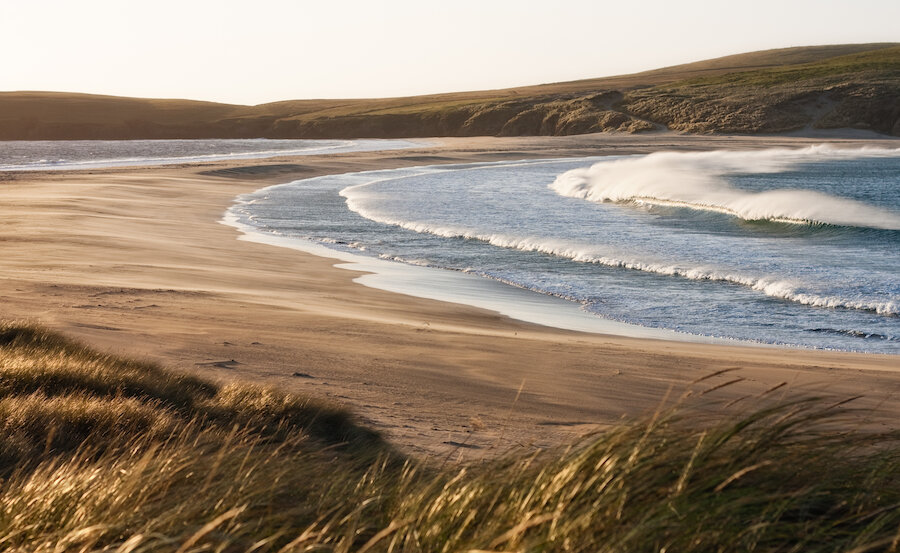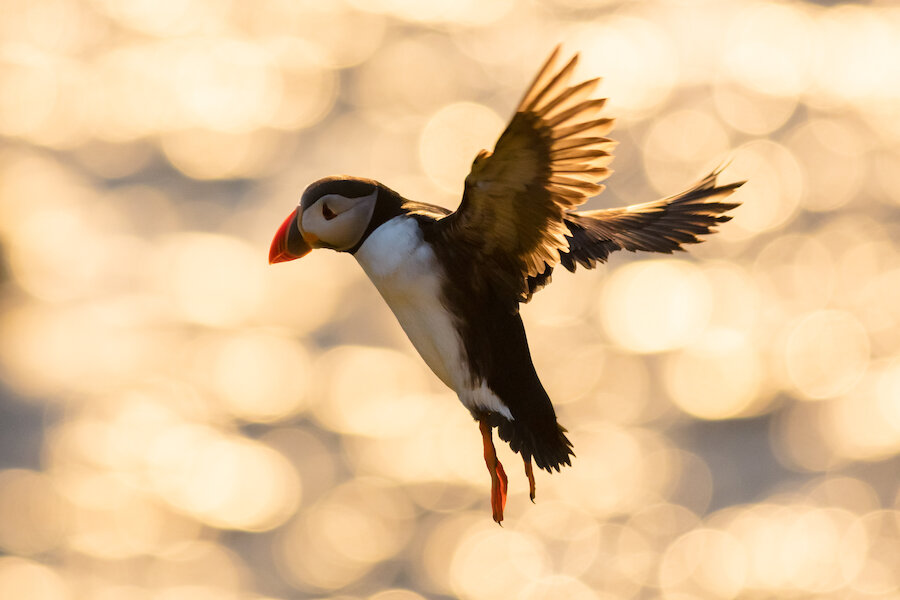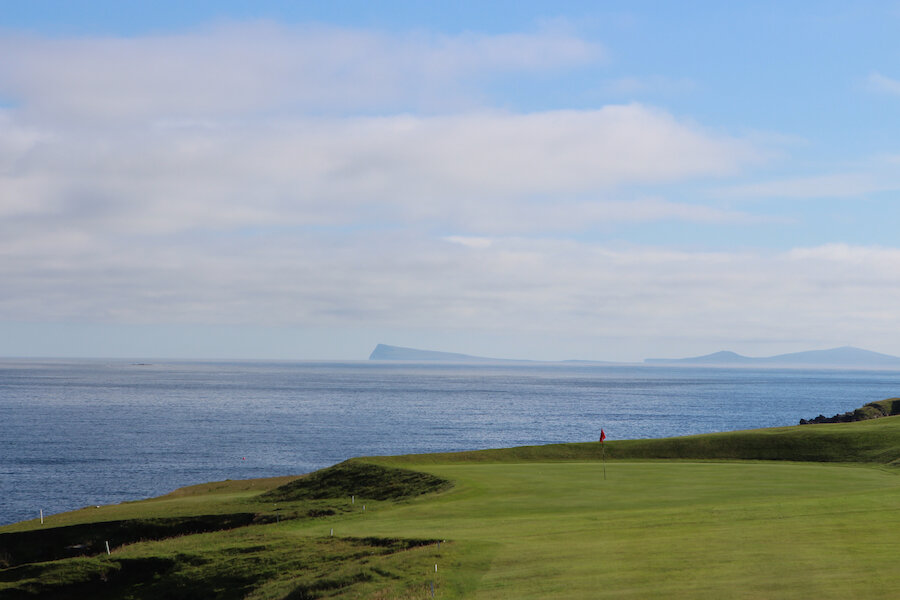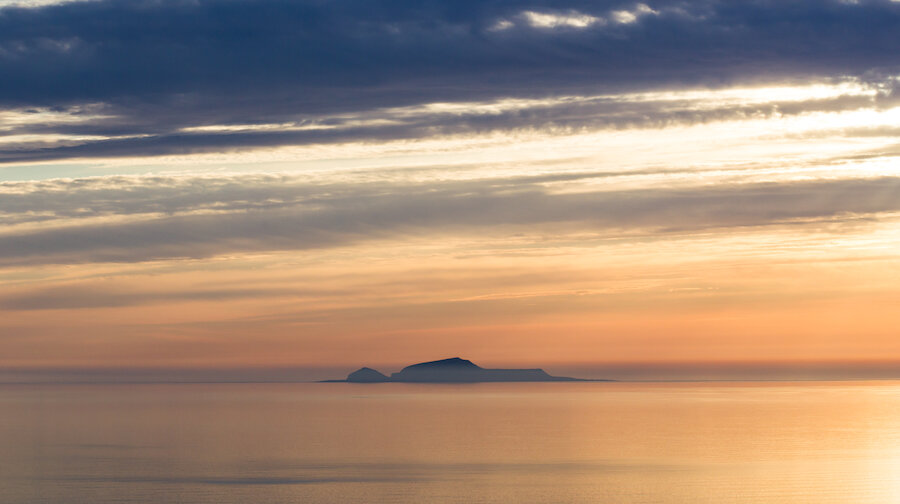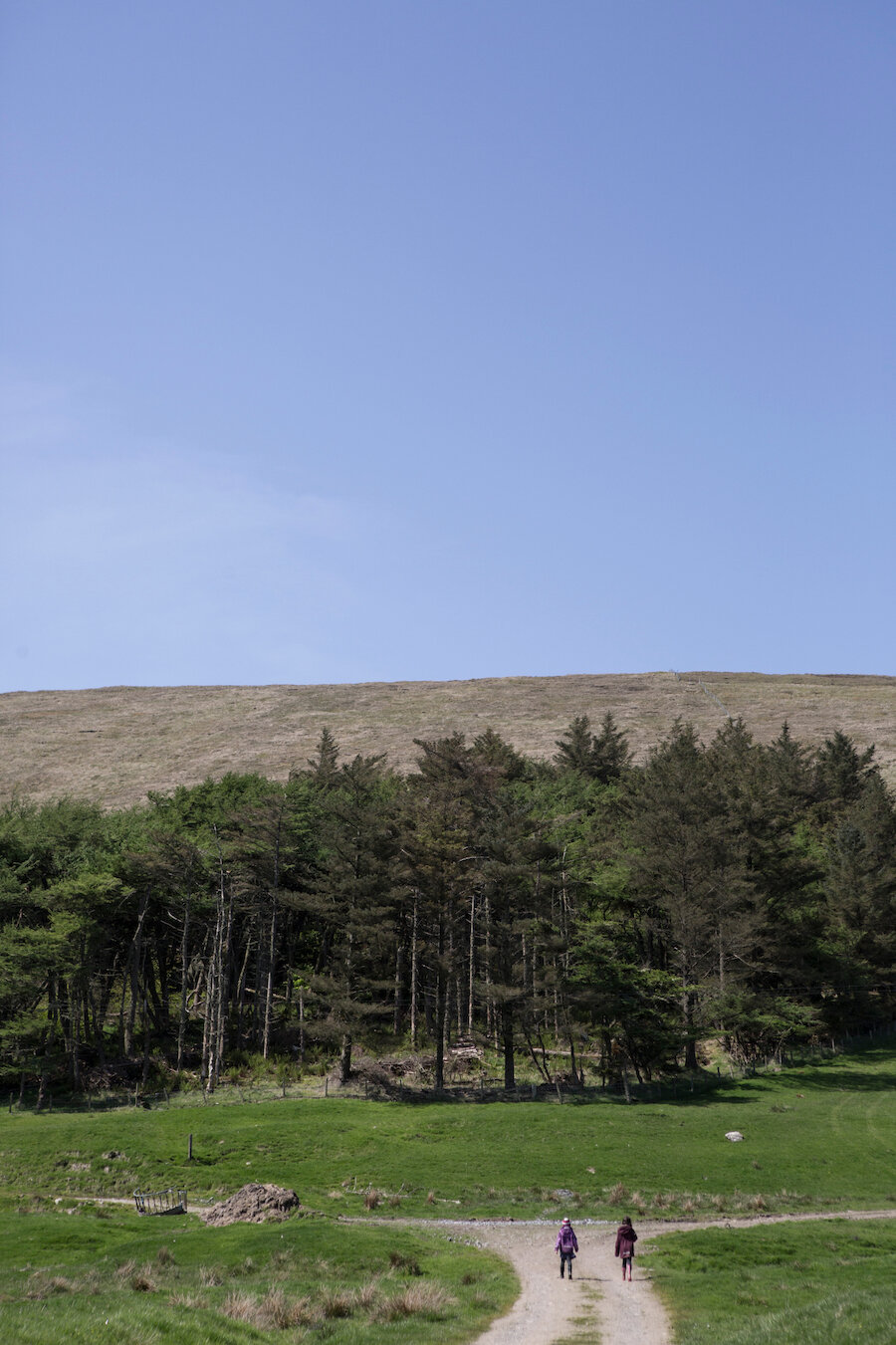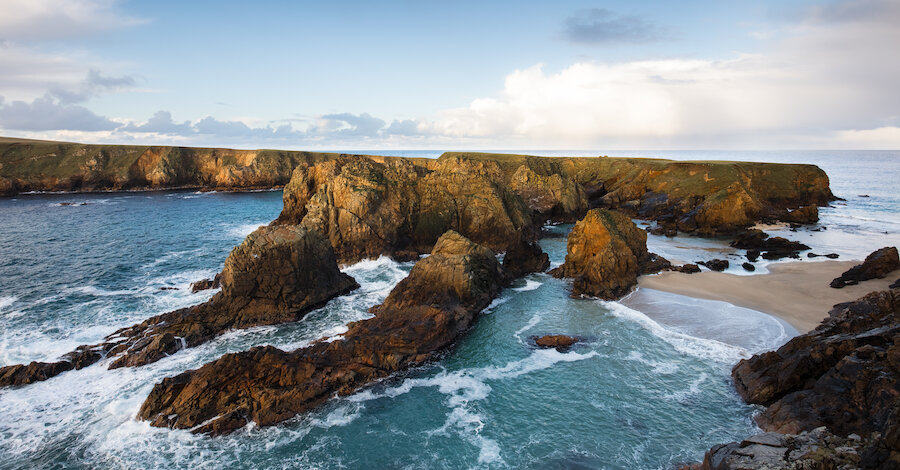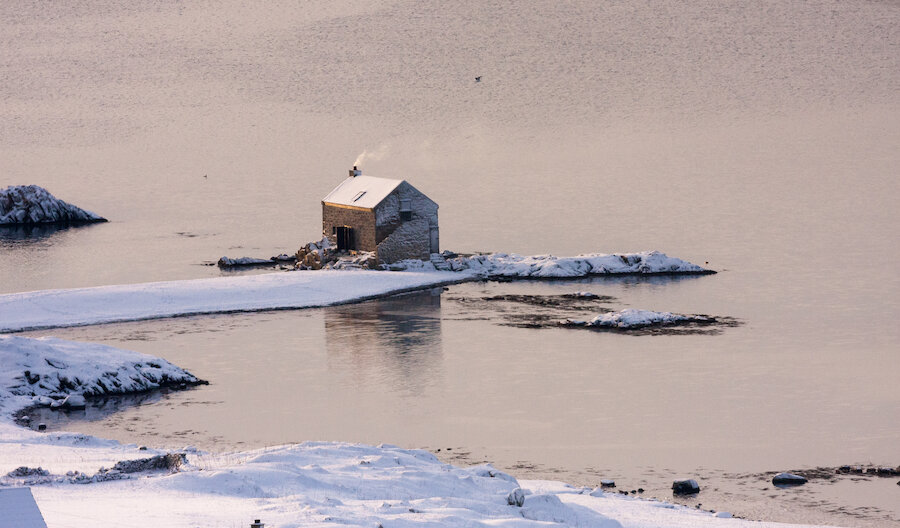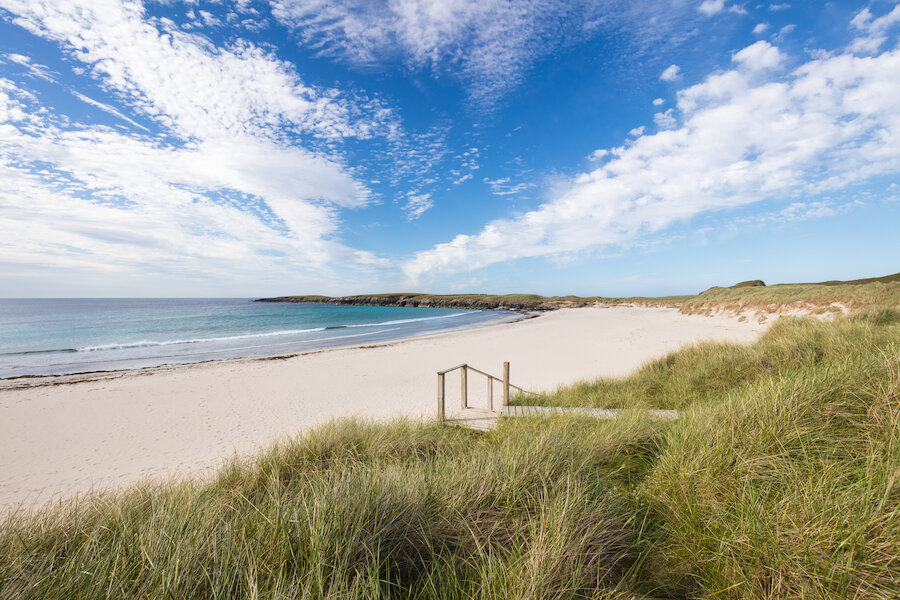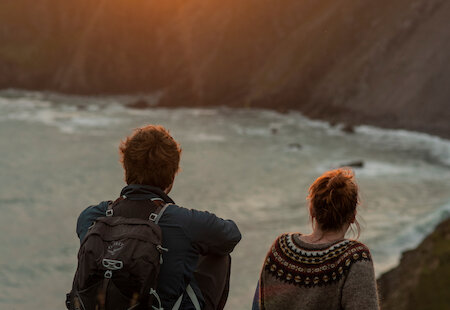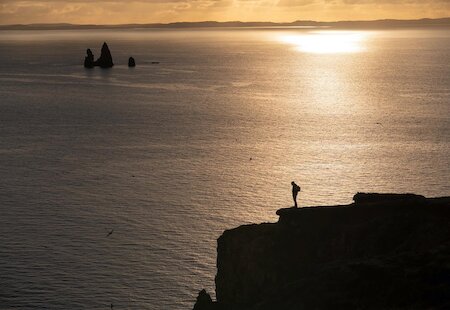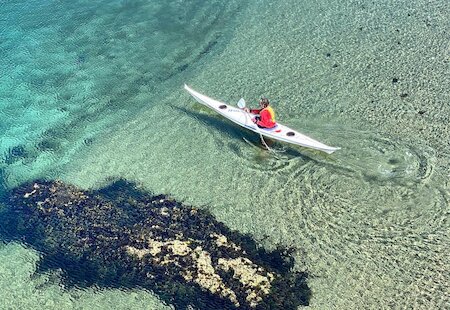11. Watch the sand disappear at St Ninian’s
The stretch of sand leading to St Ninian’s Isle from the pretty village of Bigton is the longest tombolo (a sand bar leading to an island) in the UK. It’s worth a stroll any time along the egg-timer shaped beach, to head beyond the marram dunes onto St Ninian’s Isle, where a haul of Pictish treasure was discovered by a local schoolboy in the late 1950s. But it’s particularly special as the tide comes in one either side of the beach – submerging it fully during high winter tides, but leaving a narrow sliver of sand to walk across through most of the summer.
